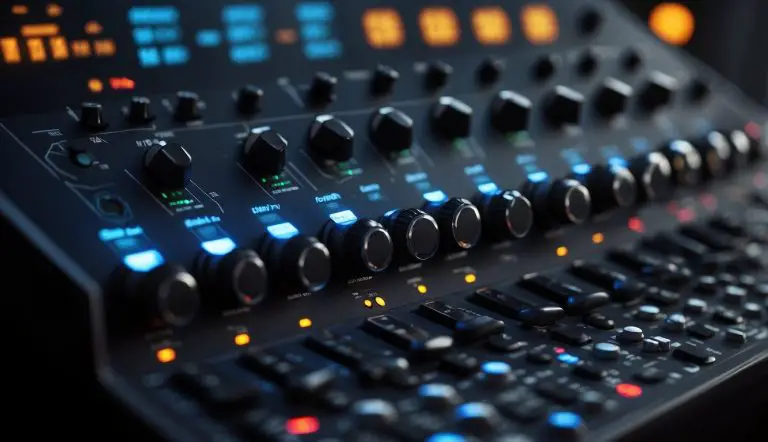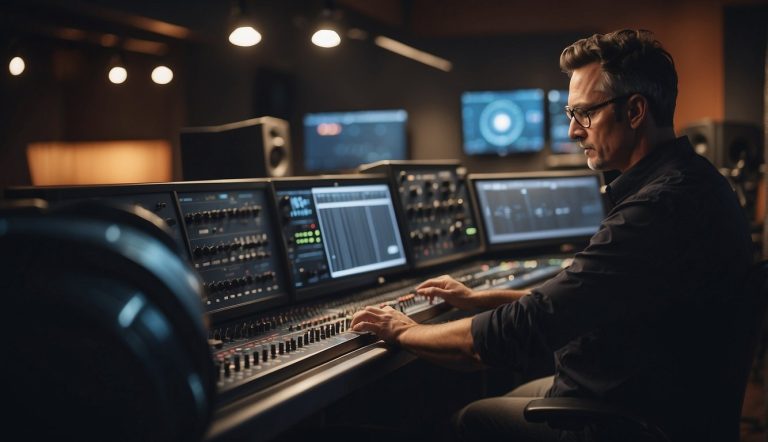The Best Wah Pedal and How to Find It
We’ve all witnessed famous bands from different eras. Whether you’re a millennial or a 40-year old, you’ve heard that famous “wah” sound at one point in your life.
The wah pedal has been a staple in your favorite band’s music. This is true since classic bands like AC/DC to contemporary ones like Linkin Park have used it frequently.
However, wah pedals aren’t just for live performances on stage. You can use the wah pedal even if you’re an amateur or a beginner. Hence, if you’re planning on buying this pedal, you’ll need to have a clear idea in what you’re looking for.
This is because wah pedals come with different features. Some are advanced while others provide basic effects. Furthermore, you should understand that deciding on the best wah pedal is entirely up to your musical preference.
Our Top 7 Best Wah Pedal 2019
- Dunlop GCB95 Cry Baby Wah Guitar Effects Pedal
- Dunlop 535Q Cry Baby Multi-Wah, Black
- BEHRINGER HELLBABE HB01
- Vox V847A Wah Pedal
- Xotic Effects Xotic Wah Effect Pedal
- Morley VAI-2 Steve Vai Bad Horsie 2 Contour Wah
- Fulltone Clyde Standard Wah
Short History of the Wah
A wah pedal is a guitar effects pedal that works similarly to its cousins. Particularly, reverb, distortion, delay and overdrive pedals are some of the other guitar effects pedals. What’s distinctive about the wah pedal is among the rest, it’s the only one that tries to mimic human cries.
This effect originated in the 1920s. The trumpet and trombone players first found about this by moving a mute in the bell of the instrument. After this discovery, it was simulated with electronics. This is where the first frame of the wah pedal was designed. It featured a pedal connected to a potentiometer.
The wah pedal was initially created by Warwick Electronics company around the mid-1960s. However, the concept of this pedal wasn’t entirely created by the said company. A lot of country music guitarists and famous jazz soloists have used self-designed tools that work similarly to a wah pedal before.
Even then, after a redesign of the famous Vox guitar amplifier, the wah pedal started to become a standard musical product for everyone.
The Mechanism of Wah Pedals
A wah pedal might only look like something you step on to produce music. However, there’s more science to its mechanisms than it seems. Knowing how a wah pedal can give you a clearer idea of how your music will be produced.
For a simpler explanation, consider an open pedal to have a “w” sound effect when pushed. On the other hand, a closed pedal will generate that “h” effect. Thus, stepping on it will produce a “w-to-h” sound. Hence, the “wah” sound is produced. Meanwhile, if you’re releasing your foot from the pedal, you’ll hear the sound go backward. Instead, it creates a “haw” sound.
These effects are created because your pedal acts as an audio filter. There are different kinds of audio filters around. For example, high-pass audio filters filter low frequency. As a result, it lets high frequencies pass beyond the cut-off mark of the filter. This is the opposite for a low-pass filter. It filters high frequencies instead. Similarly, it only lets lower frequencies pass the cut-off mark.
Your wah pedal is a combination of the two types mentioned. Hence, it’s labeled as a band pass filter. This is why you have the option to lower the lever with your foot or not. This mechanism gives you options if you want to go low or high in your frequency.
Pressing and releasing the pedal allows you to sweep through and make a variety of sounds. Why is it important to remember this simple fact? It’s because an open pedal has low range. In contrary, the closed wah pedal gives your music more treble.
Parts of a Wah Pedal
Now that you have an idea on the wah pedal’s mechanics, it’s time to focus on the parts. Having knowledge of your wah pedal’s internal parts will help you in many ways. For example, if ever your pedal gets busted, you’ll immediately know what’s wrong. Furthermore, you’ll have a better feel and an enhanced performance if you’re aware of the parts’ functions.
- Treadle – This is the lever that you push with your feet. You can’t go wrong with this part. Just try to check if the material is durable and fit for long-term use. You also want one that accommodates the size of your feet comfortably.
- Potentiometer – More commonly referred to as “the pot”; this is the core of your wah pedal. This is because this pot is responsible for the music it generates. Potentiometers are a three-terminal resistor that forms a voltage divider. This controls and measures the power supply to your wah pedal.
- Footswitch – This component features an adjustable switch that you operate by pressing it with your feet. Wah pedals come with different kinds of footswitches. One of the famous ones you’ll see is the 3PDT footswitch. It comes with a lot more spring tension. Hence, you’ll have more control over your footswitch. Adjusting the switch is the key here. You want a footswitch that doesn’t need a lot of foot pressure to activate. Likewise, you wouldn’t want a loose one. This is because you can trip it accidentally.
- Wah pedal switch felt – This works hand in hand with the footswitch. The switch felt is a self-adhesive pad for your treadle. It helps the footswitch to operate more smoothly when you adjust it. Thicker and more durable felt pads work better.
- Wah pedal bumpers – These are rubber bumpers that are found beneath your treadle. Its primary purpose is to protect the switch from too much pressure when you use it. Musicians used to remove pedal bumpers before. As a result, it gave the wah pedal more range. This practice is not advisable nowadays. This is due to wah pedals being more sophisticated in motion. It’s suggested that you shouldn’t risk squeezing out more range in exchange for durability.
Reviews Of Our Best Wah Pedal
plugin
How to Check Your Wah Pedal’s Sound Quality
There are many techniques to use for your wah pedal. Again, remember that you should consider this as another instrument you’re playing. Much like a guitar or a piano, you’d need some basic exercise to know if your wah pedal is top quality.
Before buying a guitar, you’ll usually test it out by strumming or plucking its strings. For the wah pedal, you test it by checking the sweep, filter, rhythm, and much more.
Here we present to you wah pedal exercises to check your pedal’s sound quality. These are very useful, especially for beginners. If you’re a pro, then this one is a walk in the park.
The Standard Sound: Wah-Wah
Funny as it may be, the wah pedal is also called a wah-wah pedal. The name is derived from the sound it makes, sort of similar to a human cry. This is the first sound you’d want to test on your pedal.
This is an easy exercise. First, you need to set your pedal and connect it to your electric guitar. Afterward, ready a set of notes to play on your guitar. As soon as you hit a note, press the pedal until it is closed.
Once you release the note, you also release your foot on the pedal. Do this repeatedly and quickly. Your feet should be in a rocking motion. After doing this, your pedal should have a “wah-haw-wah” sound.
The next trick here is to incorporate this into your music. For every beat you hit, the same should happen to your pedal. Once you mastered this, all that’s left is to adjust the tone to your preference.
Rhythm Patterns: Strumming with Your Wah Pedal
Simultaneously hitting your wah pedal together with your notes is quite easy. However, achieving harmony in your strumming and pedaling is challenging. This is a feel-good exercise if you’ve done it after a few tries. It gives you a sense of accomplishment because these can be seen in legendary songs like Jimi Hendrix’.
Although quite tricky, its principles are pretty basic. Since an open pedal means a lower sound, then strum your guitar’s lower strings. If you want to add treble, then pluck the high strings while closing your wah pedal. Your wah pedal should still rock back and forth like the previous one. Adding more tempo to this will give you exceptional results.
Wah Pedal as a Sound Filter
In layman’s terms, using your wah pedal as a filter simply means leaving it open at a particular angle. This is different compared to the first two. For this exercise, you won’t be using that rocking motion anymore. Instead, just apply a certain amount of pressure and leave it static.
Your pedal can be open, semi-open, or completely closed. The point of this is to give color and highlights to the sound of your guitar. As always, your ears will determine how you’ll play your pedal as a filter.
Sweeping with Your Wah Pedal
This technique is a relatively simple one to practice. Sweeping refers to the need to press your wah pedal gradually. By doing this, you’re generating a filtered sound. However, this time around it’s a shifting sound. This gives your music more variation in frequency. Remember, don’t worry too much about timing. Just play a riff and slowly rock your pedal until it closes.
The Verdict
If you are not very mindful of the price or the brand, the Xotic Effects Wah Pedal might just be the one for you. When it comes to size, durability, and versatility, this particular wah pedal is good to work with. Its controls will give you plenty space to go on experimenting with your music.
However, keep in mind that its compact size might also be an issue especially if you are not used to small wah pedals. As for the Dunlop GCB95 and Dunlop 535Q, though both have issues with durability, they are excellent for musicians who love making ad libs. Their controls are good for instantaneous adjustments in the middle of playing music.
At the end of the day, your music style and preference will decide what the best guitar pedal is for you. You must remember that sometimes the price of guitar pedals DO affect their quality. Depending on the parts and materials used to assemble it, a guitar pedal might or might not last long. Remember, it is not worth sacrificing the quality of your guitar pedal for its price.
Find other pedal guides at Musical Study



